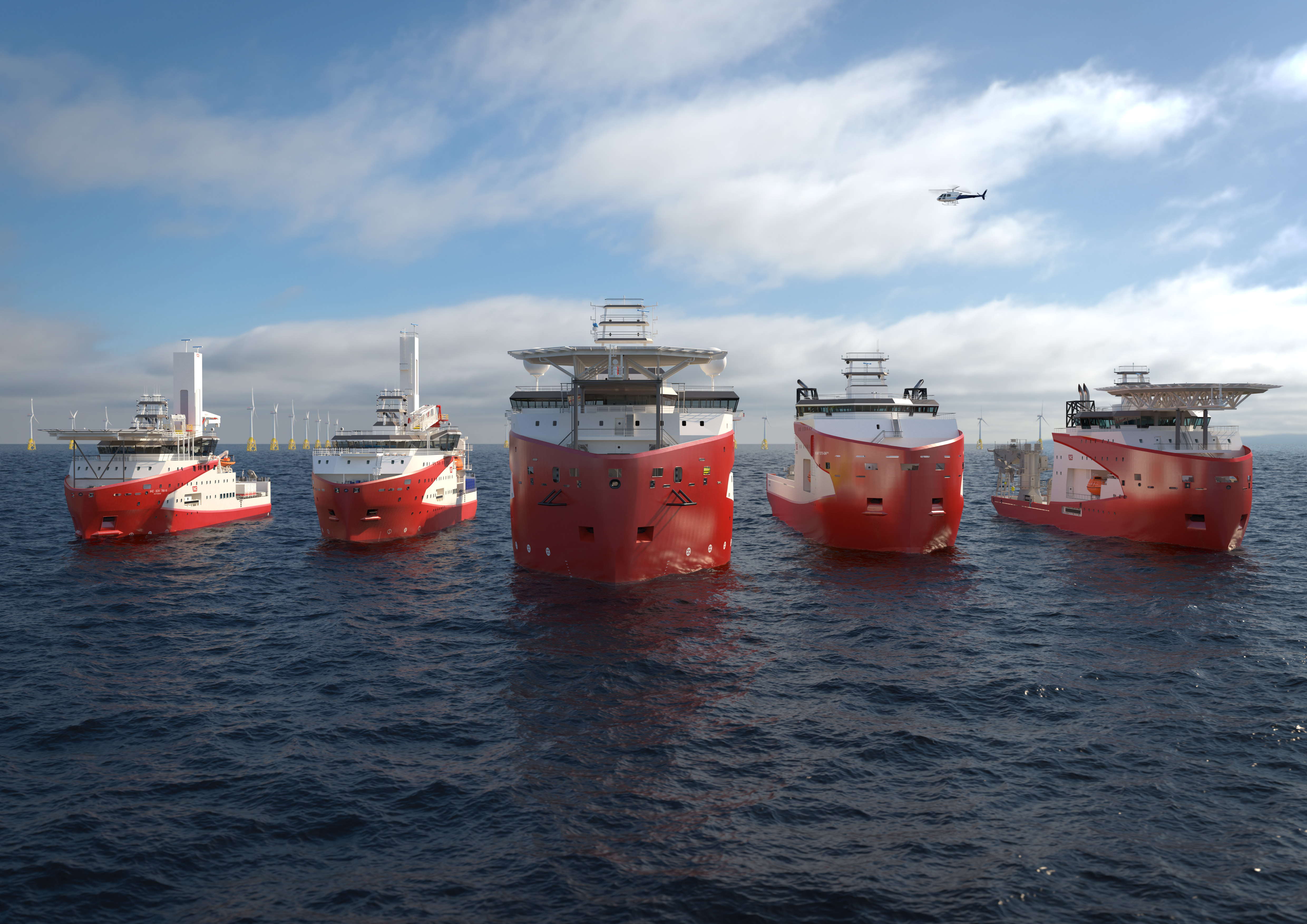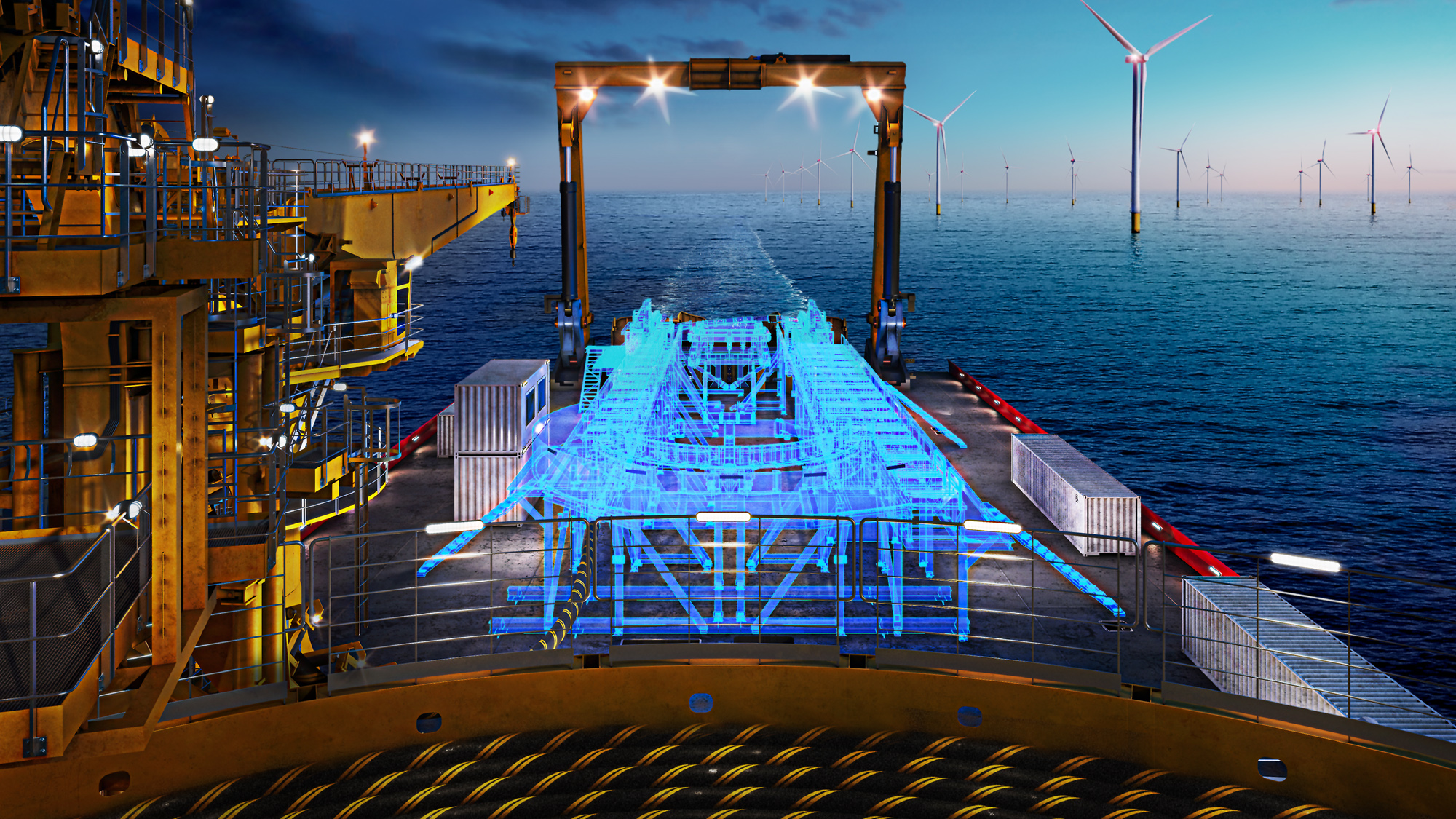Taming the Titans: the next generation of CLVs for dynamic wind power

Floating offshore wind farms: clean energy potential in deeper water
Amidst the shifting currents of the energy sector, a new horizon emerges as we venture into deeper waters: floating offshore wind farms. Unshackled by seabed limitations, they are poised to unlock vast new swathes of clean energy potential.
Yet, amidst this promise lies a landscape of unique challenges. From the installation of mooring lines to the deployment of dynamic cables resilient enough to withstand the constant motion of wind turbines and waves, navigating these hurdles is essential to unlocking the full promise of floating offshore wind energy.
At Royal IHC, we've dedicated ourselves to developing vessel and equipment solutions to surmount these obstacles. This endeavour underscores the necessity for traditional cable lay vessels, the ‘workhorses’ of the subsea industry, to undergo comprehensive evolution, from their very foundation, to navigate the dynamic frontiers of floating wind.
The current landscape: limitations and opportunities
Current cable lay vessels, despite being impressive feats of engineering, encounter challenges with managing the complexities of dynamic cable installation. Think, for example, of coping with the constant motions of floating turbines, various dynamic cable installation methods, maintaining cable tension during lay operations in deep water, and ensuring accurate cable and subsea jewellery deployment to reduce cable fatigue.
Although dynamic cable installation may seem like uncharted territory, the experience acquired by Royal IHC - through our development of integrated vessel designs and equipment for laying flexible pipes in deep waters - presents a wealth of insights that can be leveraged for dynamic cable installation.
The expertise acquired from flex lay operations in deep waters is not just analogous; it's directly applicable for installing dynamic cables in floating wind farms. Leveraging these insights enables us to reduce risks, optimise operations, and accelerate innovation in cable handling.

Beyond the basics: integrated cable handling systems and embracing multi-functionality
Dynamic cables necessitate highly specialised handling systems. Picture next-generation tensioners and meticulously controlled lowering systems, engineered to dynamically adjust to the ever-changing geometry of the cable. These systems seamlessly interface with the floating turbine, deploying various forms of subsea infrastructure to maintain the optimal catenary of the dynamic cable. Such precision ensures not only the integrity of the cable system but also the efficient and safe operation of the floating wind turbine in dynamic marine environments.
In envisioning the future of cable lay vessels, versatility emerges as the cornerstone. Imagine vessels equipped not only for cable installation but also capable of performing inspections, execute maintenance tasks, and even serve as temporary support platforms for wind turbine technicians. This multifaceted functionality will optimise resource allocation and significantly curbing overall project costs. By integrating these diverse capabilities into a single vessel, we're poised to enhance efficiency, flexibility, and ultimately, the success of floating wind ventures.
The road ahead: collaboration and continuous improvement
Looking ahead, the path to success of floating wind energy hinges on collaboration and a commitment to continuous improvement. The exchange of knowledge and expertise among naval architects, cable manufacturers, installation operators, and wind farm developers will be paramount in crafting vessels that are not only technologically advanced but also commercially viable.
By pooling our collective insights and resources, we can engineer cable lay vessels that effectively tame the dynamic nature of floating wind farms. In doing so, we open the door to a new era of sustainable power generation—one where the vast potential of offshore wind is fully realised.
For more information, or to delve deeper into the intricacies of floating wind energy and our innovative approaches, please don't hesitate to contact Shaurya Veer.
-

Shaurya
VeerProduct manager

Interested in developing the next generation of CLVs?
Please fill in the form and we will contact you.